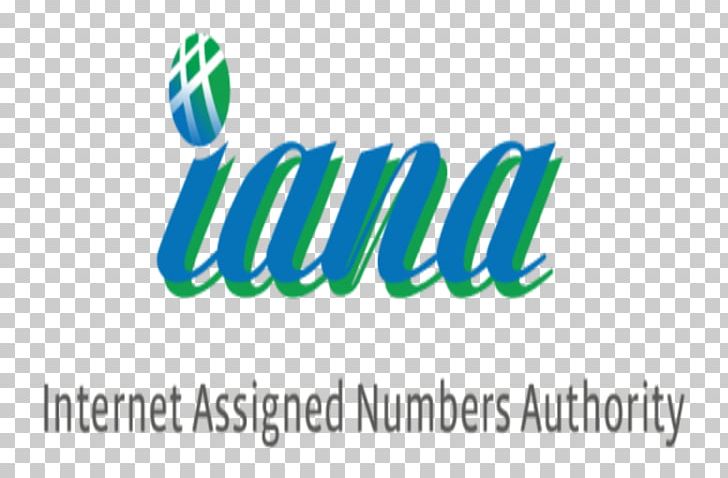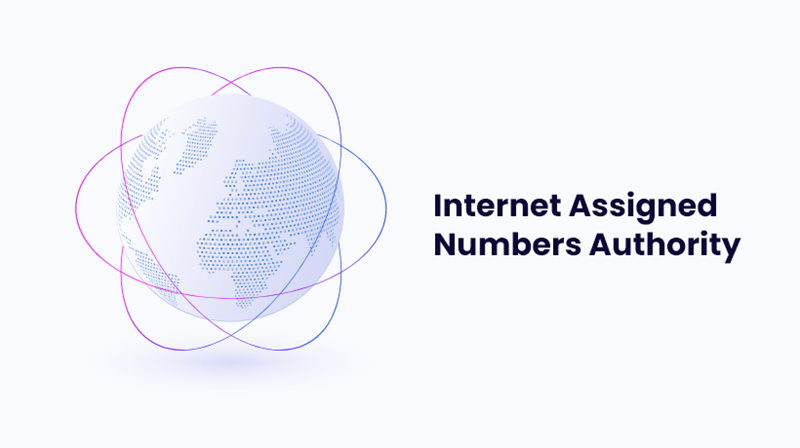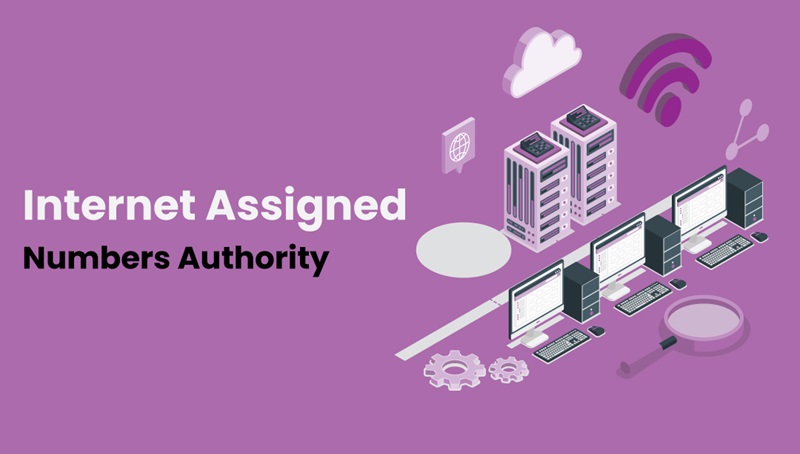The Internet Assigned Numbers Authority, often known as IANA, is an essential component of internet infrastructure, responsible for coordinating some of the key elements that keep the internet running smoothly. While the name might not be widely recognized, without the IANA, our ability to efficiently navigate the web would be significantly compromised. Established in the 1980s, IANA’s primary responsibilities include managing the DNS Root, the IP address space, and protocol assignment. Essentially, it ensures that each web address is unique, preventing duplication and confusion.
The organization also supervises the allocation of IP addresses to prevent overlap and ensure efficient usage. Furthermore, IANA has a crucial role in maintaining and updating the registry of Internet Protocol identifiers, which are essential for the functioning of various internet-based services. It also coordinates the global pool of IP and AS numbers, usually allocating these to Regional Internet Registries, who in turn distribute them in their respective regions.
Despite its crucial role, IANA does not control the internet. Its role is primarily administrative and technical, aimed at ensuring that the systems and protocols that underpin the internet function seamlessly. The organization operates under the authority of the Internet Corporation for Assigned Names and Numbers (ICANN), a non-profit organization that took over from the U.S. Government in 1998.
In its function, IANA follows established policies developed by the Internet community. These policies are set through a bottom-up, consensus-based process, allowing for broad input from various stakeholders, including businesses, civil society, governments, research institutions, and individuals. This approach ensures that the essential functions of IANA are carried out in a manner that is open, transparent, and democratic, reflecting the decentralized nature of the internet.
The Internet Assigned Numbers Authority has played a pivotal role in the evolution and growth of the internet. It has helped to coordinate and streamline the technical elements of the internet, enabling the creation of a robust, scalable, and adaptable global network. While the organization may operate largely behind the scenes, its impact on the everyday use of the internet is significant. It continues to be a fundamental part of the internet’s operation, ensuring that the vast and complex systems of the World Wide Web function smoothly and efficiently.
In conclusion, the Internet Assigned Numbers Authority is a vital part of the internet’s infrastructure. Its role in managing various crucial elements of the internet has helped make the internet what it is today – a global network that is accessible, reliable, and efficient. As the internet continues to grow and evolve, the role of IANA will undoubtedly remain critical in overseeing the technical and administrative aspects that keep the internet running smoothly.

Overview of the Internet Assigned Numbers Authority (IANA)
The Internet Assigned Numbers Authority (IANA) is an integral part of the global internet infrastructure, responsible for the coordination of key elements that keep the internet running smoothly. Established by the U.S. Department of Commerce in cooperation with ICANN (Internet Corporation for Assigned Names and Numbers) and other international organizations, IANA’s primary task is to manage the allocation and assignment of unique identifiers, such as IP addresses and domain names, used in internet protocols. Effectively, IANA ensures that each online address is unique, avoiding potential conflicts or overlaps, thereby ensuring the seamless operation of the internet worldwide.
IANA also manages the DNS Root, the upper-most part of the domain name system structure, and the .int and .arpa domains. Another critical role of IANA is the maintenance of a comprehensive list of internet protocol parameters, which includes port numbers, character sets, and MIME types, among others. These parameters are used in various internet protocols that help in data exchange and communication over the internet.
IANA’s functions are integral to the stability and interoperability of various internet services. Its responsibilities also extend to the time zone database used by computers to set their clocks accurately according to the local time zone. IANA’s work, though largely invisible to the ordinary internet user, is critical to ensuring the smooth, reliable, and consistent operation of the internet as we know it.
To summarize, the Internet Assigned Numbers Authority (IANA) plays an essential role in the internet’s smooth functioning by managing and coordinating the allocation and assignment of unique identifiers. Its responsibilities include managing the DNS Root, maintaining a list of internet protocol parameters, and managing the time zone database. Despite working behind the scenes, IANA’s role is fundamental to maintaining the internet’s stability and interoperability.
IANA’s Role in Internet Governance
The Internet Assigned Numbers Authority (IANA) plays a vital role in maintaining the global coordination of the DNS Root, IP addressing, and other Internet protocol resources. It is an integral part of the infrastructure of the Internet, ensuring its smooth and efficient operation. Administered by the Internet Corporation for Assigned Names and Numbers (ICANN), IANA’s role extends to the allocation of IP addresses, management of the top-level domain name system (DNS), and the maintenance of comprehensive databases related to these functions.
In terms of IP address allocation, IANA distributes blocks of IP addresses to five regional Internet registries (RIRs) around the world. These RIRs, in turn, allocate the IP addresses to Internet Service Providers and other end users in their respective regions. This hierarchical distribution model ensures a structured and fair allocation of IP addresses globally.
Regarding the DNS system, IANA oversees the root zone management which involves the assignment of top-level domains. This includes generic top-level domains (gTLDs) like .com or .org, and country code top-level domains (ccTLDs) like .us or .uk. By managing this process, IANA ensures that each domain name is unique and properly mapped to the correct IP address.
Furthermore, IANA maintains protocol registries as required by Internet Engineering Task Force (IETF) which develops and promotes voluntary Internet standards. These registries contain various parameters used in different Internet protocols, such as port numbers in the Transport Control Protocol (TCP), ensuring that these parameters are consistently used across the Internet.
Therefore, IANA’s role is pivotal in ensuring the operational stability, reliability, and global interoperability of the Internet. It works behind the scenes to facilitate the seamless flow of information and assure the harmonious interconnection of networks. Its contribution to Internet governance is critical to the continued growth and evolution of the Internet as a platform for global communication and commerce.

Key Functions and Responsibilities of IANA
The Internet Assigned Numbers Authority (IANA) serves a crucial role in the global coordination of the Internet’s system of unique identifiers. These unique identifiers include domain names, Internet Protocol (IP) addresses, and protocol parameters, which are integral to the smooth functioning of the internet. IANA is responsible for the global coordination of these identifiers to ensure that each one is unique and not duplicated. This is necessary to maintain the integrity of the internet and ensure that each device, website, or service can be accurately identified and connected to.
In addition to this, IANA also manages the root zone of the Domain Name System (DNS), which is the authoritative reference for all top-level domains (like .com or .gov). It is IANA’s responsibility to update this root zone when a new top-level domain is authorized or when an existing one changes its status. Another important function of IANA is the allocation of IP address blocks to regional internet registries, which in turn distribute these addresses to users in their respective regions.
Furthermore, IANA administers the protocol parameters for various internet protocols. This involves maintaining a registry of the codes and numbers used in different internet protocols to ensure interoperability between different software implementations. Finally, IANA also plays a role in the management of the .int top-level domain, which is reserved for organizations established by international treaties.
In executing these tasks, IANA works closely with various entities including the Internet Engineering Task Force (IETF), the Regional Internet Registries (RIRs), top-level domain operators, and the global internet community. Its operations and decisions are guided by community-developed policies, aiming to maintain an open, transparent, and reliable internet for all.
How IANA Manages Domain Names and IP Addresses
The Internet Assigned Numbers Authority (IANA) is a department of ICANN, a non-profit private American corporation that oversees global IP address allocation, autonomous system number allocation, root zone management in the Domain Name System (DNS), media types, and other Internet Protocol-related symbols and Internet numbers.
IANA’s principal role is to manage the DNS Root, the top-level distribution point of the DNS. This function involves liaising with global Domain Name Registries, who manage the distribution of IP addresses and domain names. The delegation and administration of Top-Level Domains (TLDs) in the DNS root zone are overseen by IANA, which includes generic top-level domains (.com, .net, .org, etc.), and country code top-level domains (.us, .uk, .cn, etc.).
In managing IP addresses, IANA allocates blocks of IP addresses to five regional Internet registries (RIRs) around the world. These RIRs then distribute IP addresses to Internet service providers and organizations within their respective regions. This distribution is based on a global policy developed by the Internet community. It is essential to note that IANA does not directly control the assignment of IP addresses to end users. Its role is more of a stewardship one, ensuring that the limited resource of IP addresses is allocated in a balanced and fair manner.
Moreover, IANA also maintains a registry of several sets of codes and numbers that are used as network protocols on the Internet. These include port numbers, protocol numbers, enterprise numbers, and many others. This ensures the smooth operation of the Internet, as these numbers and codes are universally recognized and used in network communication.
In essence, IANA’s management of domain names and IP addresses plays a pivotal role in ensuring the efficient operation and global interoperability of the Internet, facilitating its growth and evolution.

Recent Developments and Updates from IANA
The Internet Assigned Numbers Authority (IANA) continues to evolve and innovate in its provision of vital internet services. One of the recent developments from IANA is the full transition to the new protocol, Internet Protocol version 6 (IPv6). This was necessitated by the impending exhaustion of the IPv4 addresses. IPv6 offers a vastly larger pool of IP addresses, enhancing the scalability of the internet.
Additionally, IANA recently implemented the Root Zone Key Signing Key (KSK) rollover. This is a crucial security measure that involves generating and distributing a new cryptographic public and private key pair for the DNS root zone. This procedure ensures the continued security and stability of the DNS system.
In relation to domain names, IANA has been working on the Internationalized Domain Name (IDN) program. This aims to enable internet users around the world to navigate the web in their native languages by introducing domain names in non-Latin scripts. An example of this was the delegation of the .ευ domain for Greek script.
Furthermore, IANA has updated the .INT domain, which is used for registering organizations established by international treaties between governments. The update has seen changes in registration policies to better align with the evolving needs of these organizations.
IANA’s recent developments also include the Time Zone Database, which records historical changes in time zones and daylight saving rules. The database is utilized by many internet systems to ensure correct time data. IANA has been focusing on maintaining and updating this database to account for global changes in time zone policies.
These recent developments and updates from IANA highlight its ongoing commitment to the smooth operation of the internet, ensuring it remains secure, stable, and accessible to all users worldwide. Despite the complex and evolving nature of its responsibilities, IANA continues to adapt and innovate, fostering the global growth and development of the internet.
